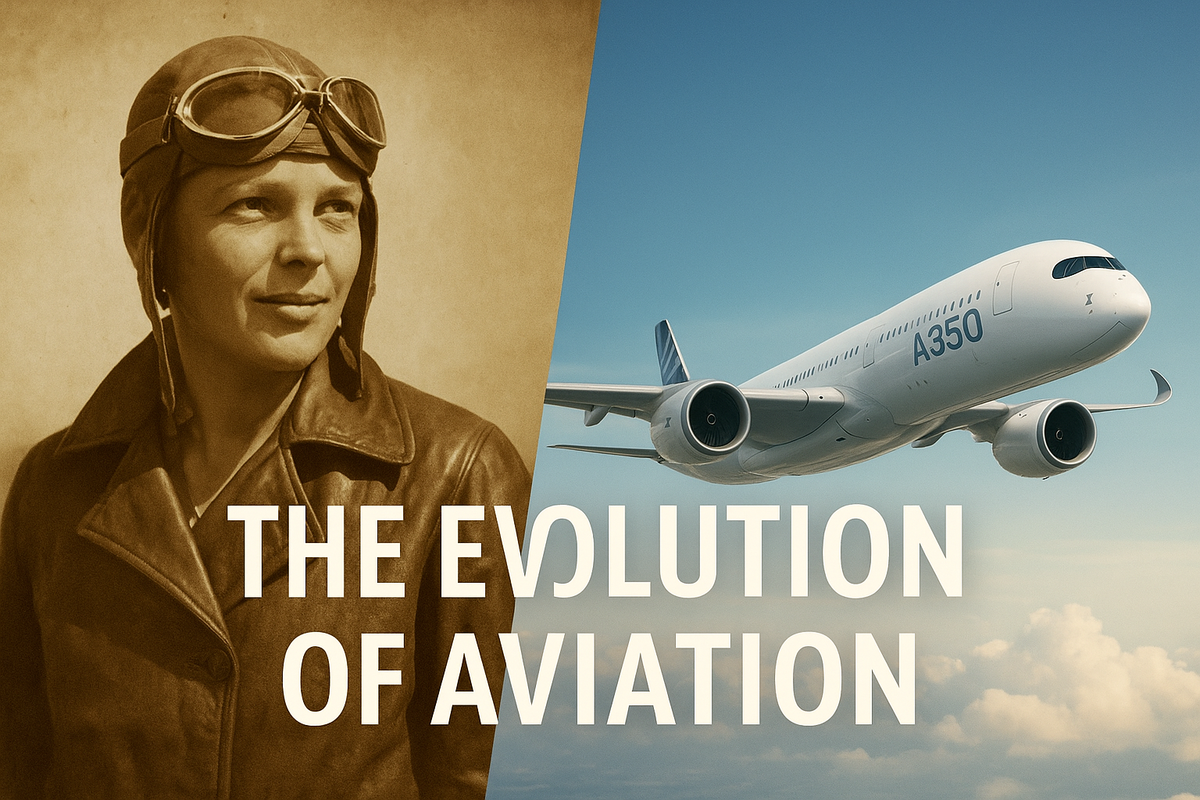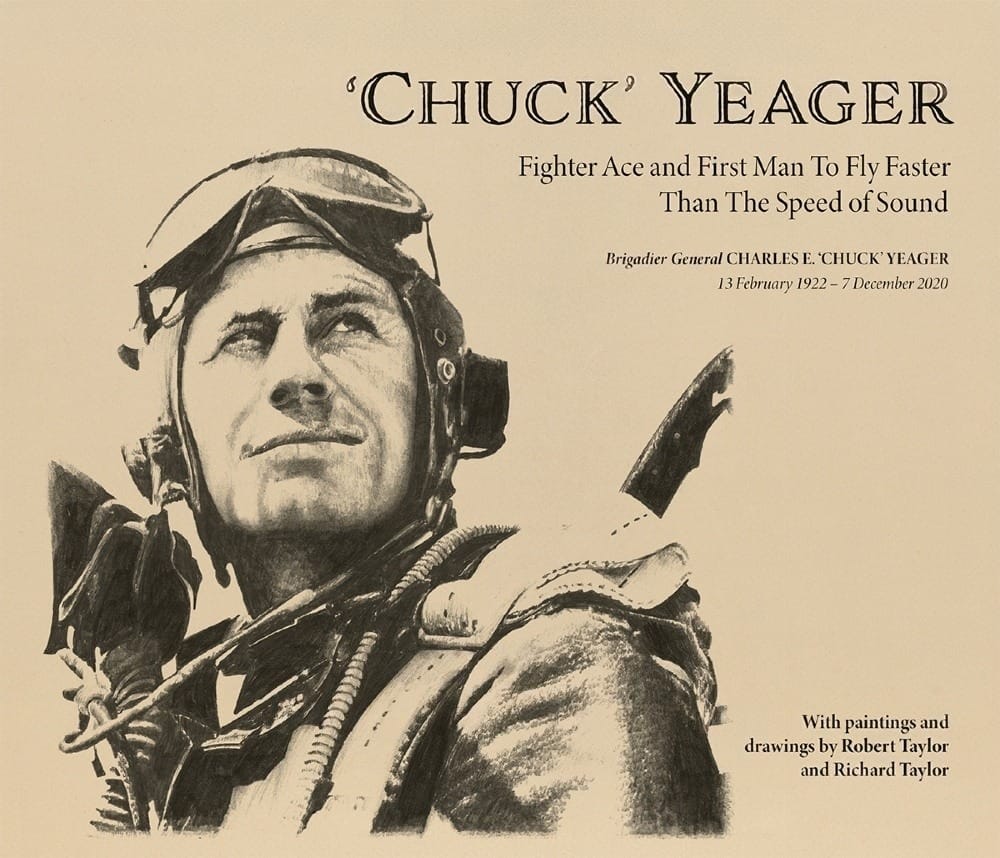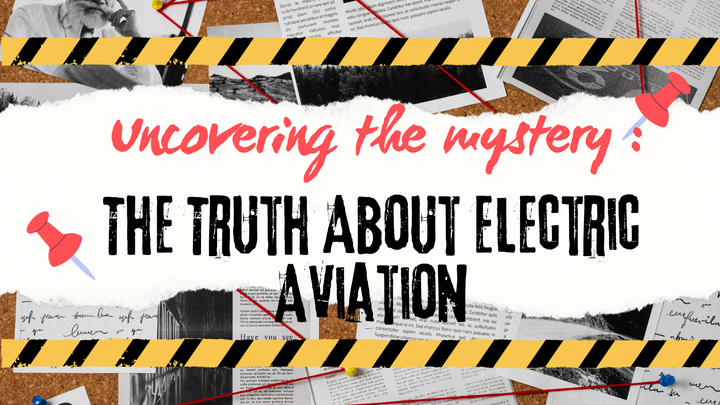The Evolution of Aviation: Dream Turned Reality
From the Wright brothers’ 12-second flight to the elegance of the Airbus A350, aviation’s journey is one of courage, innovation, and passion. A nostalgic look at how flying evolved from dream to everyday miracle.

Aviation has always been more than transportation for me. It’s a love, a passion, a story that started long before I was born and continues to shape my life every time I hear the roar of jet engines. I still remember pressing my face to the window as a child, heart racing as the aircraft rolled down the runway, that magical moment of liftoff making me feel weightless. Even now, I get goosebumps.
Flying has gone from being a wild dream to an everyday reality. People used to look up at birds and think, “If only…” Today, we complain if the Wi-Fi doesn’t work at 35,000 feet, but often forget we aren't even supposed to be flying at 35,000 feet! The evolution of aviation is a tale of dreamers, engineers, adventurers, and even a few rebels who refused to accept limits.
Everyone has a favorite jet, my personal favorite modern marvel is the Airbus A350. Every time I see one taxiing at an airport, its sleek curves, whisper-quiet engines, and futuristic design remind me just how far we’ve come from the Wright brothers’ fragile flyer.
So, sit back, relax, and let’s take a journey together, from the dusty dunes of Kitty Hawk to the quiet hum of an A350 cruising over the Atlantic.
Airplane flying at Golden Hour (credit: Creators' Help)
THE 12 SECONDS THAT SHAPED AVIATION
It all began on December 17, 1903, at Kitty Hawk, North Carolina. Orville and Wilbur Wright managed to get their homemade flyer off the ground for a mere 12 seconds. Just 12 seconds! But those seconds carried humanity into a new age.
Think about it, up until then, people believed “if man were meant to fly, he’d have wings.” The Wright brothers didn’t have wings, but they had vision, grit, and a willingness to crash over and over until they got it right.
These early planes looked like flying bicycles with bedsheets stretched over them. Pilots wore goggles, scarves, and nerves of steel. Each takeoff was experimental, each landing a gamble. Yet, those fragile machines sparked the flame that would soon engulf the world.

THE GOLDEN AGE OF AVIATION
The years between the world wars were filled with adventure. This was the era of daredevils, brainstormers, and pioneers who turned flying into a public spectacle. Pilots would dive, loop, and perform stunts that left crowds gasping.
And then there was Amelia Earhart. Her name deserves to be spoken with reverence. In 1932, she became the first woman to fly solo across the Atlantic. She wasn’t just a pilot, she was a symbol of courage, independence, and the refusal to be grounded by society’s expectations. Her mysterious disappearance during her attempt to circumnavigate the globe in 1937 remains one of aviation’s greatest unsolved stories, but her legacy continues to inspire every aviator who dares to dream.
Air travel for passengers also blossomed during this time. It wasn’t glamorous yet, you’d freeze, you’d bounce around, and the noise was unbearable, but compared to weeks on a ship, it was revolutionary. By the late 1930s, airlines like Pan Am began offering flying boats and luxury airliners that hinted at what was to come: the golden glamour of the skies.
"The most effective way to do it, is to do it" - Amelia Earhart

WORLD WAR II
As with many great inventions, war accelerated progress. WWII transformed aviation from wooden props to all-metal war machines.
The skies filled with legendary aircraft: the Spitfire defending Britain, the P-51 Mustang roaring over Europe, and the B-17 Flying Fortress thundering across the Atlantic. Speed, altitude, and range expanded at an unbelievable pace.
By 1947, just two years after the war ended, Chuck Yeager broke the sound barrier in the Bell X-1. Imagine that, less than half a century after the Wrights, humans were flying faster than sound itself. Aviation wasn’t just evolving; it was sprinting.

THE JET AGE: IT'S ALL ABOUT GLAMOUR
Ah, the Jet Age. This is where nostalgia truly soars. If you ask your grandparents, chances are their eyes light up when they talk about their first jet flight.
The Boeing 707 took off in 1957 and suddenly the world shrank. New York to London went from a multi-day journey to a mere 7 hours. Then came the queen herself: the Boeing 747, the “Jumbo Jet.” With its double deck, massive engines, and ability to carry hundreds of passengers, it redefined what global travel meant.
Flying was glamorous. Passengers dressed in their finest clothes, airlines served multi-course meals on real China, and flight attendants embodied style and sophistication. Air travel wasn’t just about getting from A to B; it was a lifestyle.
And let’s not forget Concorde. The supersonic marvel that could whisk you from London to New York in under 4 hours. It was loud, it was expensive, but oh, it was magnificent. Ask anyone who ever flew it, it wasn’t just a flight, it was a privilege.

THE DIGITAL ERA
By the 1980s, the glamour faded, but the magic remained. Deregulation and low-cost carriers like Southwest and Ryanair made air travel affordable for the masses. Suddenly, a middle-class family could plan a weekend getaway to another country.
Yes, legroom shrank, meals became sandwiches, and boarding got chaotic. But the world opened up. Millions of people took their first flights in this era, creating memories that still make them smile today.
For me, part of the nostalgia of aviation is that first boarding pass, that first time you hear the engines roar, that stomach-drop during takeoff. Whether you were flying economy or first class, nothing could replace that sense of wonder.
Technology also revolutionized flying: GPS, fly-by-wire systems, quieter and safer engines. By the 2000s, aviation was so reliable that many people forgot how miraculous it actually is.

SEPTEMBER 11 ATTACKS
Every industry has a day that changes it forever. For aviation, that day was September 11, 2001.
Before 9/11, flying felt almost carefree, families could walk to the gate, and cockpit doors were often open. In just a few hours, airplanes, once symbols of freedom, were turned into weapons, and aviation was changed forever.
Security tightened overnight: grounded flights, TSA checkpoints, strict baggage rules, and locked cockpit doors became the new normal. Airports stopped feeling casual and became fortresses of safety.
The tragedy also reshaped the psychology of flying. Passengers became more alert, airlines invested heavily in safety, and technology, from biometrics to digital tracking, accelerated at breakneck speed to restore trust.
Even today, the legacy of 9/11 lingers in every security line and reinforced cockpit door. It remains the darkest chapter in aviation, but also the moment that made the skies safer and more resilient.

HOW THE FUTURE LOOKS?
Now we stand at another turning point. The A350, my personal favorite, represents everything beautiful about modern aviation. It’s efficient, elegant, and so quiet it feels like floating through the sky. Sitting in one feels like peeking into the future of flight, a future that balances performance with sustainability.
What comes next?
Sustainability: Electric planes, hydrogen power, and sustainable aviation fuel (SAF) are being developed. The goal? To keep flying while reducing our impact on the planet.
Supersonic 2.0: Boom Supersonic and others are working to bring back faster-than-sound travel. Will we get another Concorde moment? I hope so.
Space Travel: Companies like SpaceX and Virgin Galactic are blurring the line between aviation and space. Imagine one day casually saying, “I’ll be back in a few hours, just heading to orbit.”
The skies are changing again, and I can’t wait to see what’s next.

CONCLUSION
Aviation has never just been about planes, it’s about passion, about humanity’s refusal to stay grounded. From the Wright brothers’ 12 seconds of courage to Amelia Earhart’s fearless journeys, from the roaring engines of WWII to the elegance of the 747 and the innovation of the A350, the story of flight is really the story of us.
For me, aviation isn’t just history, it’s love. It’s passion. Every takeoff still feels like a miracle. Every landing still feels like a triumph. And every glimpse of an A350 reminds me how far we’ve come, and how much farther we can go.
So next time you fly, pause for a moment. Look out the window as the earth falls away beneath you. Feel the engines hum, the clouds roll by, and the sun paint the horizon. Remember: just over a century ago, this was impossible. Today, it’s routine, but it’s still magic.
Thank you for flying with me on this nostalgic journey through aviation’s evolution. Until we meet again, keep your seatbelt fastened. The sky isn’t the limit, it’s just the beginning.
Once you have tasted flight, you will forever walk the earth with your eyes turned skyward. - Leonarda Da Vinci (maybe)





Comments ()